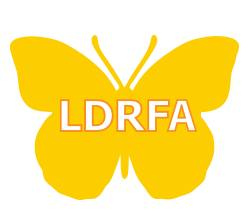Dyslexia can seriously interfere with a child’s ability to read and write. As children enter the third and fourth grades, the disorder and its symptoms will only continue to increase and create more obstacles hindering normal education.
Table of Contents
ToggleUnderstanding dyslexia and different teaching methodologies are paramount if you want to help dyslexic students to learn.
We’ll examine some fundamentals of how to teach dyslexic students and how to help these students succeed in the classroom.
How to Teach Dyslexic Students
Dyslexic students have trouble with ordered lists and multi-syllabic words. While each student will have more nuanced issues, those two are typically the main sources of the difficulty.
The student’s issue is not one of intelligence or comprehension. Their difficulty is in the interpretation of information. This difficulty can be overcome when teachers focus on the logical progression of letters and sounds and reinforce those connections over time.
Methods like clapping and rhyming can help to solidify such connections. Consider giving children dedicated time to work on reading and writing assignments without distraction from peers.
Paying close attention to the child’s questions is also essential. Each student will have their own individual needs. The specific difficulties experienced by the student when observed closely can give teachers great insight into the ways in which they can help to address them.
Flexibility and Understanding
It’s important that you help the child see their disorder for what it is — a temporary obstacle that can be conquered and overcome. Feelings of low intelligence or inferiority are unjustified. Teachers must use patience and understanding to help children understand that fact and build the child’s self-esteem.
Working with students who learn differently means learning the differences and applying them based on individual needs. The dyslexic student may not be able to adjust their learning style like the other students so the burden of adaptation falls upon the instructors.
Encouragement is key, and you can teach a dyslexic student to write if you have a patient, compassionate approach.
Teaching Methodologies for Dyslexia
Because each student is different, it’s tough to create a standard method of teaching that will work for each person. With that said, there are general guidelines that tend to work in many cases when teaching dyslexic students.
First, use imagery whenever possible. Reinforcing linguistic concepts with visual ones will be a great help.
This is because dyslexia is a disorder that doesn’t affect a person’s ability to see the information so much as it affects their ability to interpret language. Mixing pictures with words and sounds will strengthen student understanding.
Teachers should also adjust their style of feedback. Deliver feedback in a constructive, engaging way. While some students may be able to work with a few red streaks across an assignment, dyslexic students should be given more specific, involved feedback.
Address not the specific error, but the underlying concept that isn’t being understood. The average student’s error might be a result of forgetfulness or lack of preparation, but a dyslexic student may be having fundamental difficulty with the language contained in a problem or two.
More Dyslexia Resources.
Understanding how to teach dyslexic students can certainly be challenging. However, by educating yourself and learning different strategies, you can really make a difference in students’ lives. To learn more take a look at some of the tech innovations that are helping students with dyslexia learn easier in the classroom.


